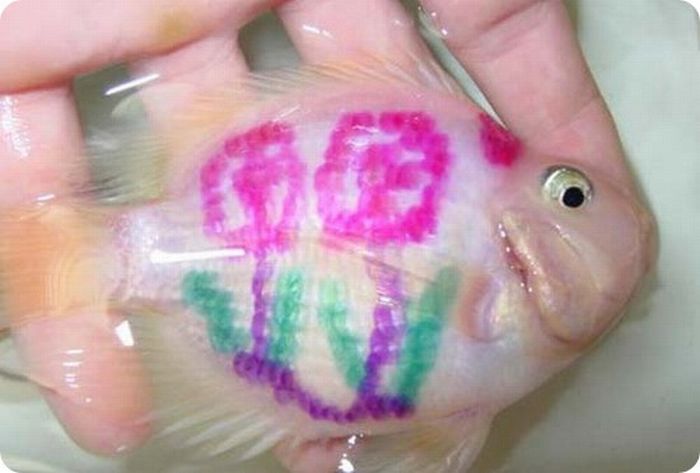|
|
Goldfish With A Tattoo, China
|
During the Tang Dynasty (618–907), it was popular to raise carp in ornamental ponds and watergardens. A natural genetic mutation produced gold (actually yellowish orange) rather than silver coloration. People began to breed the gold variety instead of the silver variety, keeping them in ponds or other bodies of water. On special occasions at which guests were expected they would be moved to a much smaller container for display.
In 1162, the Empress of the Song Dynasty ordered the construction of a pond to collect the red and gold variety. By this time, people outside the imperial family were forbidden to keep goldfish of the gold (yellow) variety, yellow being the imperial color. This is probably the reason why there are more orange goldfish than yellow goldfish, even though the latter are genetically easier to breed.
The occurrence of other colors (apart from red and gold) was first recorded in 1276. The first occurrence of fancy tailed goldfish was recorded in the Ming dynasty. In 1502, goldfish were introduced to Japan, where the Ryukin and Tosakin varieties were developed. In 1611, goldfish were introduced to Portugal and from there to other parts of Europe.
During the 1620s, goldfish were highly regarded in Southern Europe because of their metallic scales, and symbolized good luck and fortune. It became tradition for married men to give their wives a goldfish on their one year anniversary, as a symbol for the prosperous years to come. This tradition quickly died, as goldfish became more available, losing their status. Goldfish were first introduced to North America around 1850 and quickly became popular in the United States.
|
|









